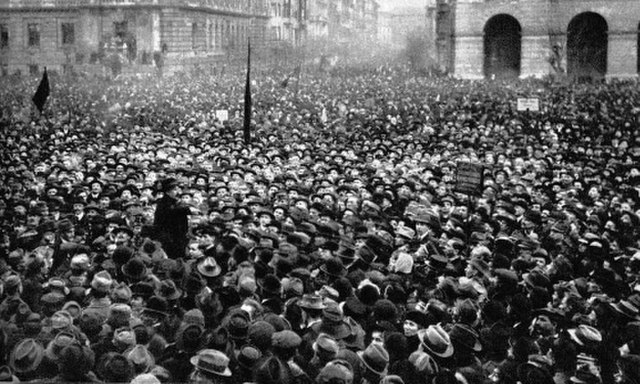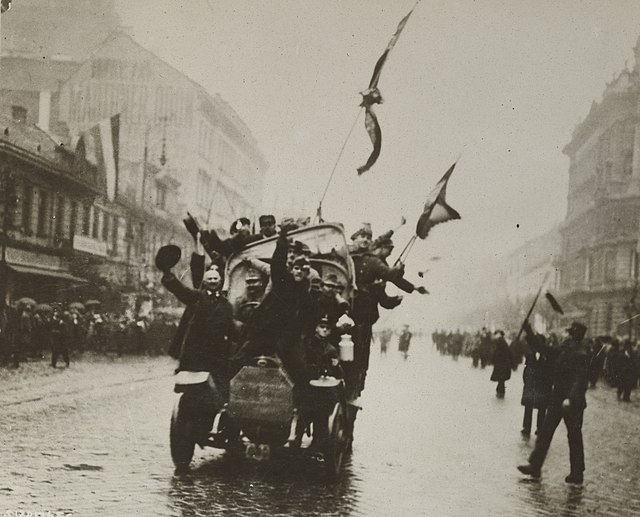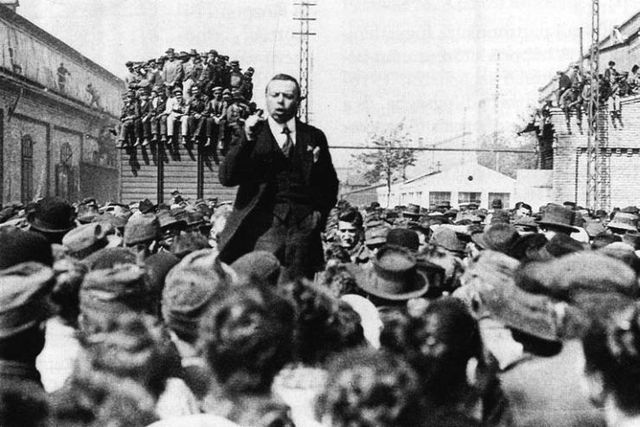Tibor Szamuely was a Hungarian communist politician and journalist who was Deputy People's Commissar of War and People's Commissar of Public Education during the Hungarian Soviet Republic.
Tibor Szamuely
Tibor Szamuely, Béla Kun, Jenő Landler. Monument in Budapest.
Tibor Szamuely, the leader of Lenin Boys meets with Vladimir Lenin in Moscow in 1919.
Hungarian Soviet Republic
The Socialist Federative Republic of Councils in Hungary was a short-lived communist state that existed from 21 March 1919 to 1 August 1919, succeeding the First Hungarian Republic. The Hungarian Soviet Republic was a small communist rump state which, at its time of establishment, controlled approximately only 23% of Hungary's historic territory. The head of government was Sándor Garbai, but the influence of the foreign minister Béla Kun of the Party of Communists in Hungary was much stronger. Unable to reach an agreement with the Triple Entente, which maintained an economic blockade of Hungary, in dispute with neighboring countries over territorial disputes, and beset by profound internal social changes, the soviet republic failed in its objectives and was abolished a few months after its existence. Its main figure was the Communist Béla Kun, despite the fact that in the first days the majority of the new government consisted of radical Social Democrats. The new system effectively concentrated power in the governing councils, which exercised it in the name of the working class.

Proclamation of the Hungarian Soviet Republic, 21 March 1919
The government of the Hungarian Soviet Republic from left to right: Sándor Garbai, Béla Kun, Vilmos Böhm, Tibor Szamuely, György Nyisztor, Jenő Varga, Zsigmond Kunfi, Dezső Bokányi, József Pogány, Béla Vágó, Zoltán Rónai, Károly Vántus, Jenő Landler, Béla Szántó, Sándor Szabados, György Lukács, Jenő Hamburger, Gyula Hevesi, and Antal Dovcsák.
An automobile loaded with communists dashing through streets of Budapest, March 1919
Béla Kun, the de facto leader of the Hungarian Soviet Republic







